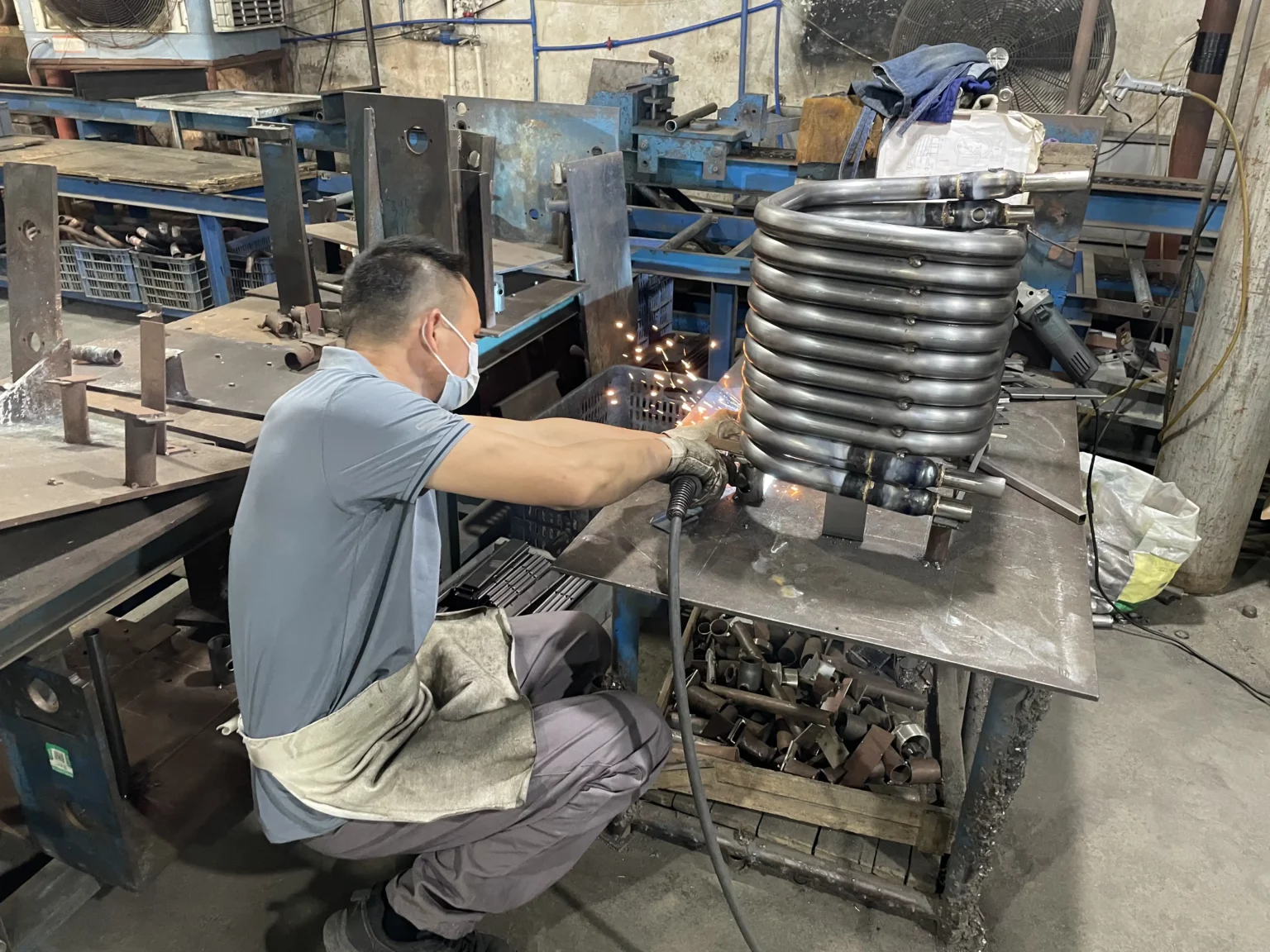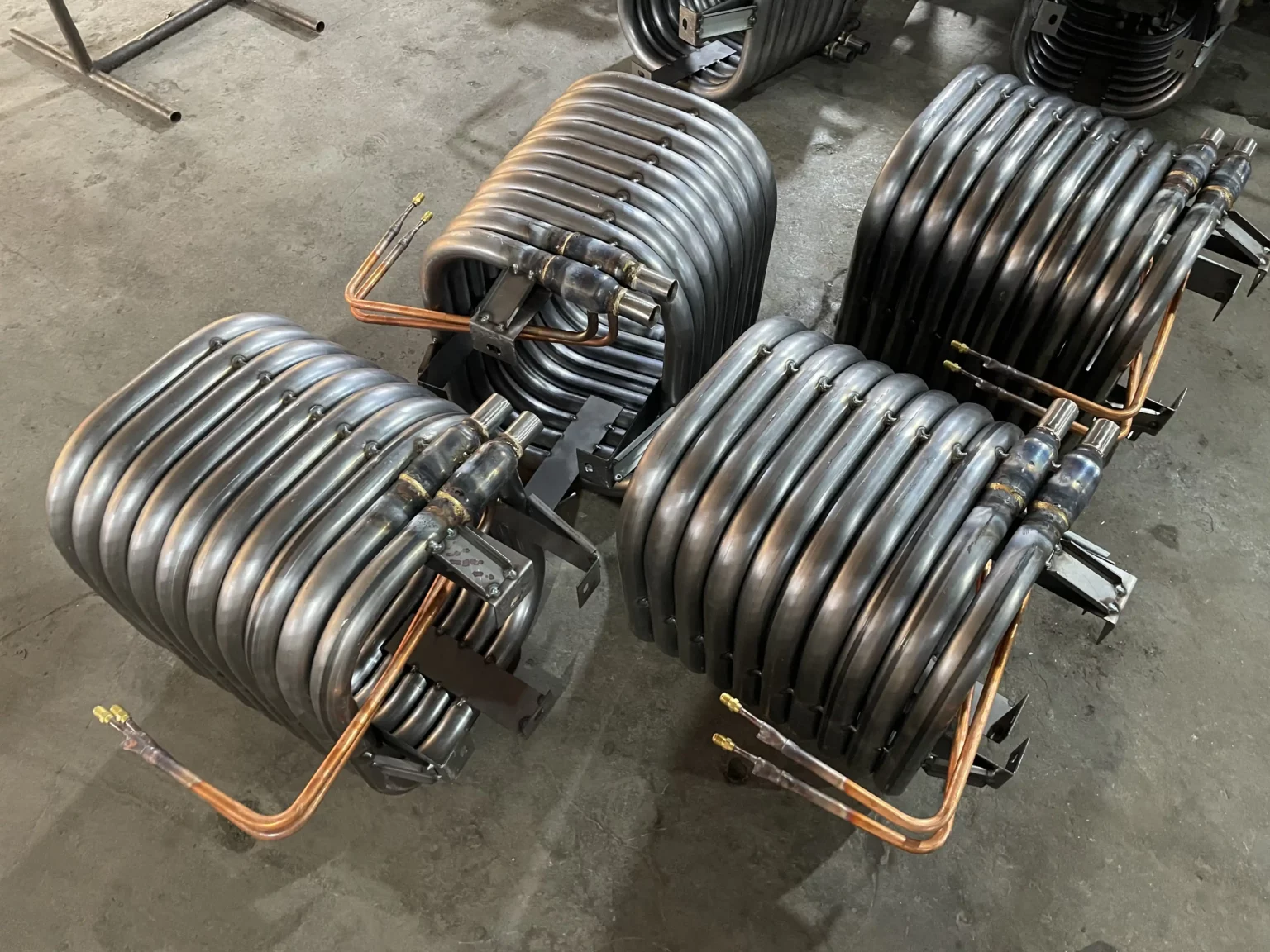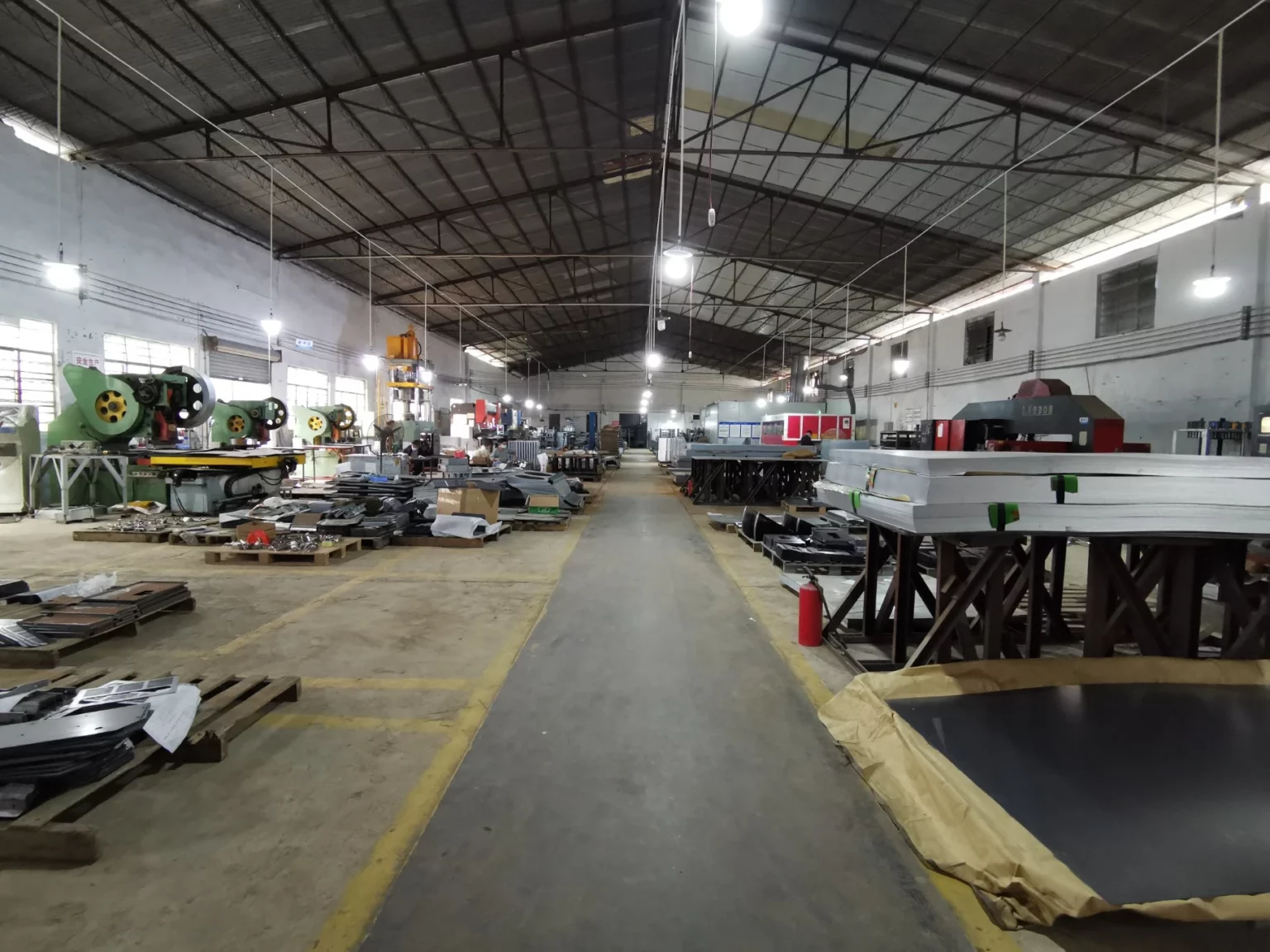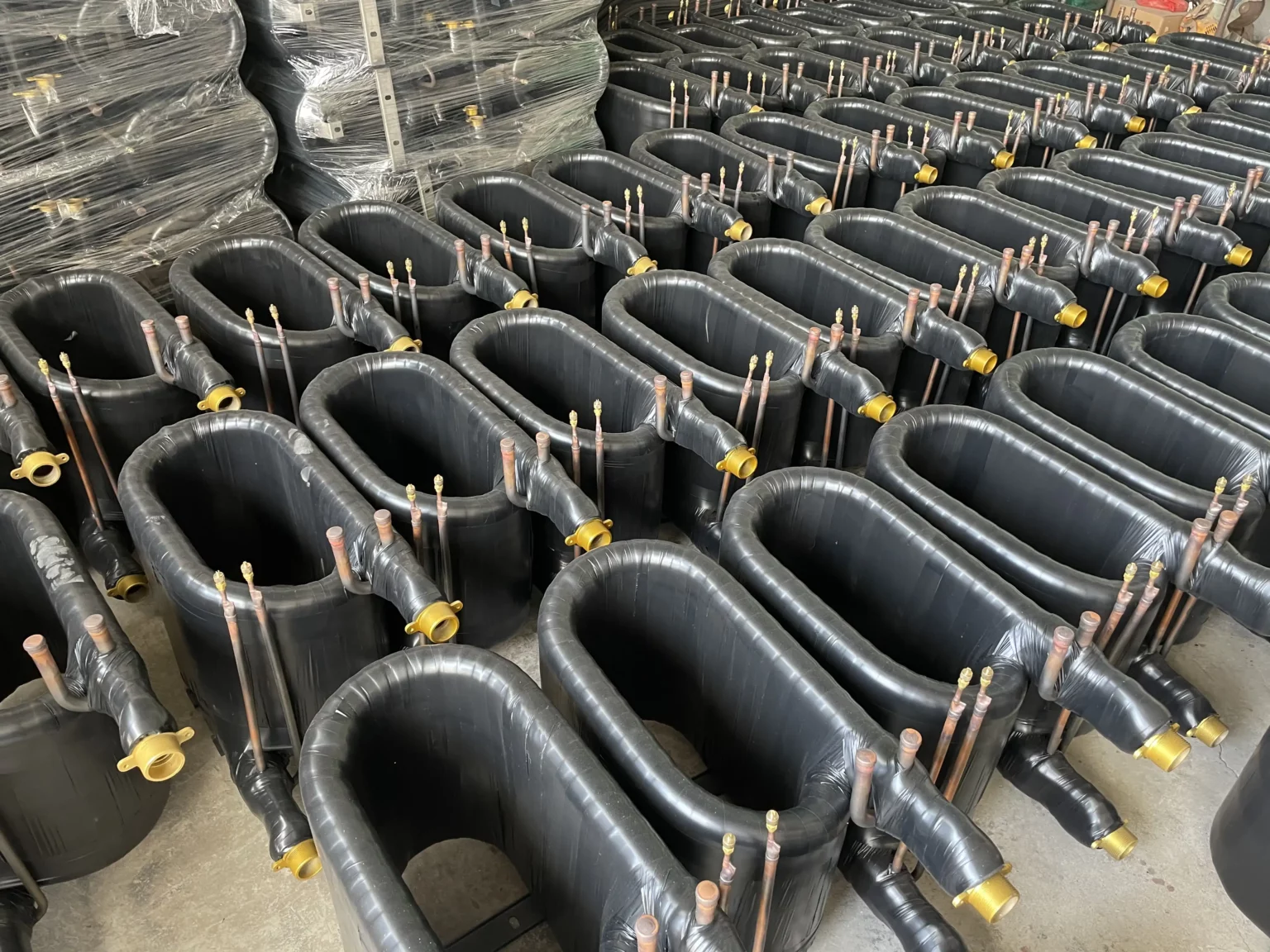First of all, what is coaxial heat exchanger?
coaxial heat exchanger is a type of heat exchanger that consists of two concentric tubes or pipes, where one tube is placed inside the other. The inner tube carries the fluid that needs to be heated or cooled, while the outer tube carries the fluid that transfers heat to or from the inner tube.
The coaxial design allows for efficient heat transfer between the two fluids. The inner and outer tubes are usually made of different materials to optimize heat conductivity. The heat exchange occurs through the walls of the tubes, as the fluids flow in opposite directions, creating a counterflow heat exchange configuration.
Coaxial heat exchangers are commonly used in various applications, including heating and cooling systems, air conditioning systems, refrigeration systems, and heat recovery systems. They are compact, reliable, and provide good thermal performance due to their efficient design.
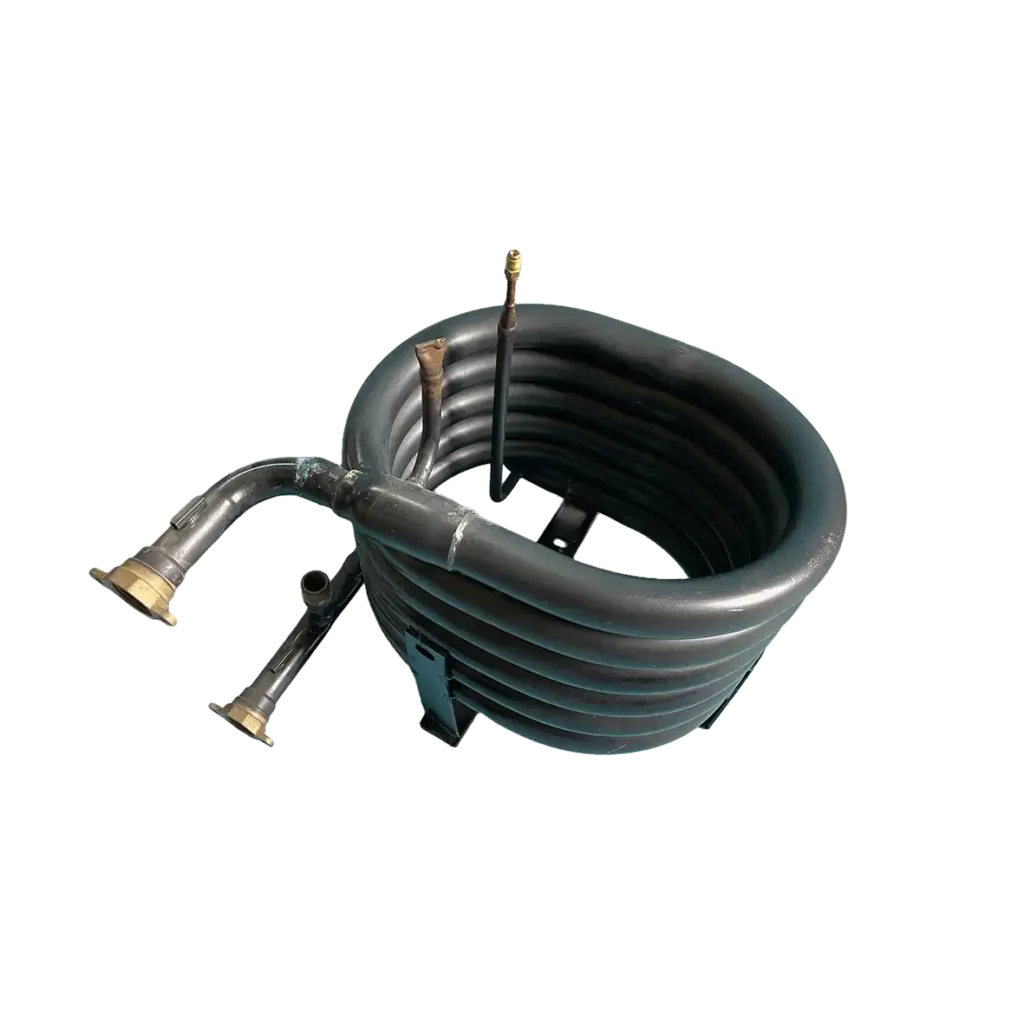
What are the applications of coaxial heat exchangers?
Coaxial heat exchangers are widely used in refrigeration and air conditioning systems. They facilitate the transfer of heat between the refrigerant and the surrounding air or water, allowing for efficient cooling or heating.
Heating, ventilation, and air conditioning (HVAC) systems employ coaxial heat exchangers to exchange heat between the indoor and outdoor environments. They help in heating or cooling the air efficiently, improving energy efficiency and providing comfortable indoor environments.
Coaxial heat exchangers are integral components of geothermal heat pump systems. They enable the transfer of heat between the ground and the refrigerant circulating in the system. The coaxial design allows for a compact and efficient heat exchange process.
Coaxial heat exchangers are used in heat recovery applications where waste heat from one process or system is utilized to preheat or heat another fluid or system. This can be seen in industrial processes, power plants, and cogeneration systems, where the waste heat is harnessed to improve overall energy efficiency.
Coaxial heat exchangers are used in hot water circulation systems where they help transfer hot water from a heat source, such as a boiler or solar collector, to various points where hot water is needed. This design enables efficient heat transfer within the system, ensuring quick supply of hot water to users.
Coaxial heat exchangers find widespread applications in the oil and gas industry for heating and cooling processes involving crude oil, natural gas, or other chemicals. They can withstand high temperatures and pressures, providing reliable heat transfer performance.
Coaxial heat exchangers are also employed in medical equipment such as extracorporeal circulation machines and artificial heart-lung machines. They are used to regulate and control the temperature of blood in extracorporeal circulation systems, ensuring the patient’s body temperature remains within a safe range during surgery.
Coaxial heat exchangers are utilized for heating or cooling food and beverages in the food processing and beverage industry. They provide fast and reliable heat exchange, meeting temperature control requirements during food processing.
Coaxial heat exchangers can be employed in solar thermal systems, where they assist in transferring heat from solar collectors to a working fluid. They help convert solar energy into usable heat, which can be utilized for water heating, space heating, or other thermal applications.
What are the types of coaxial heat exchangers?
FAQS About coaxial heat exchanger
The coaxial heat exchanger operates on the principle of counter-flow heat exchange. The heat transfer fluid flows through the outer tube, while the fluid to be heated or cooled flows through the inner tube. Heat is transferred between the two fluids through the walls of the tubes.
Coaxial heat exchangers offer several advantages, including compact size, high heat transfer efficiency, low pressure drop, and resistance to fouling. They are also suitable for applications where the two fluids need to be physically separated.
Yes, coaxial heat exchangers can handle a wide range of fluids, including water, refrigerants, oils, and gases. The choice of materials for the tubes depends on the compatibility with the specific fluids being used.
Coaxial heat exchangers can be designed to withstand high-pressure conditions. The choice of materials and construction techniques can be tailored to meet the requirements of the application.
In some cases, coaxial heat exchangers can be repaired if they develop a leak. The feasibility of repair depends on factors such as the extent of the damage, the accessibility of the leak, and the availability of repair techniques.
Coaxial Heat Exchanger Recommendations
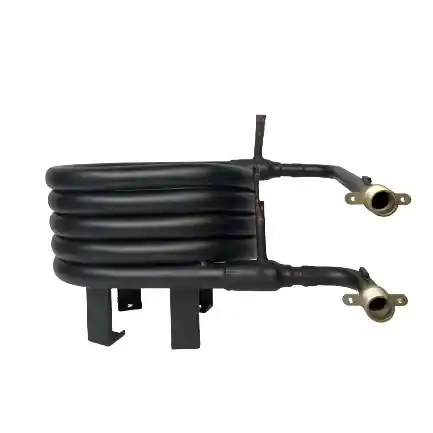
Various Shapes and Customization Options: We offer a range of standard models with different shapes, including circular, elongated, rectangular, double spiral, and helical shapes. Additionally, we provide customization options to meet your specific size requirements, ensuring a perfect fit for your application.
Wide Range of Applications: Their coaxial heat exchanger is an ideal choice for heat pump water heaters, air/water source heat pumps, and other applications. The inner tube can be lined with materials such as copper, copper-nickel, stainless steel, and titanium to meet various heat transfer needs in different operating conditions.
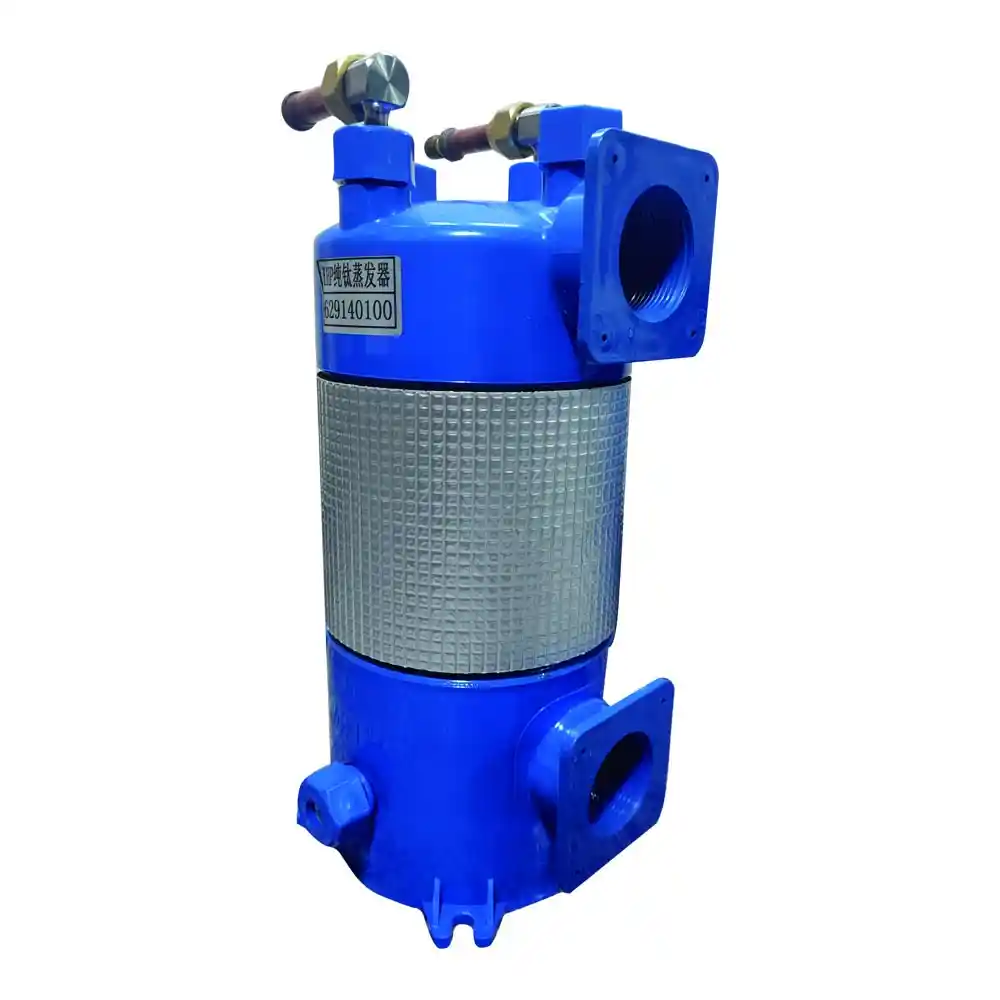
Titanium is chosen as the material for both the tubes and shell due to its excellent corrosion resistance, high strength, and ability to withstand extreme temperatures. It is particularly suitable for applications where aggressive or corrosive fluids are involved, making the titanium shell and tube heat exchanger ideal for various industrial processes.
The design of this heat exchanger allows for efficient heat transfer, making it suitable for applications such as chemical processing, petroleum refining, power generation, and HVAC systems. Its robust construction and corrosion-resistant properties ensure durability and long-term performance.
In summary, the PVC-encased titanium shell and tube heat exchanger is a reliable and efficient solution for heat transfer in various industries, providing effective thermal performance and protection against corrosion.
Nasz zakład
Various Shapes and Customization Options: They offer a range of standard models with different shapes, including circular, elongated, rectangular, double spiral, and helical shapes. Additionally, we provide customization options to meet your specific size requirements, ensuring a perfect fit for your application.
Wide Range of Applications: Their coaxial heat exchanger is an ideal choice for heat pump water heaters, air/water source heat pumps, and other applications. The inner tube can be lined with materials such as copper, copper-nickel, stainless steel, and titanium to meet various heat transfer needs in different operating conditions.
Comparison of Different Material Combinations for Coaxial Heat Exchangers
1. Outer Tube:Carbon Steel Inner Tube: Stainless Steel
- Description: This combination utilizes carbon steel for the outer tube and stainless steel for the inner tube.
- Brief Description: Carbon steel provides strength and corrosion resistance for the outer tube, while stainless steel offers excellent corrosion resistance and high-temperature performance for the inner tube.
- Differentiation: This combination offers a balance between strength and corrosion resistance. Carbon steel provides strength, while stainless steel ensures corrosion resistance and high-temperature performance.
2. Outer Tube: Carbon Steel, Inner Tube: Copper
- Description: This combination features carbon steel for the outer tube and copper for the inner tube.
- Brief Description: Carbon steel provides strength and corrosion resistance for the outer tube, while copper offers high thermal conductivity and corrosion resistance for the inner tube.
- Differentiation: This combination prioritizes efficient heat transfer with the high thermal conductivity of copper, while carbon steel provides strength and corrosion resistance.
3. Outer Tube: Carbon Steel, Inner Tube: Titanium
- Description: In this combination, carbon steel is used for the outer tube, and titanium is used for the inner tube.
- Brief Description: Carbon steel provides strength and corrosion resistance for the outer tube, while titanium offers excellent corrosion resistance, high strength, and low density for the inner tube.
- Differentiation: Titanium’s exceptional corrosion resistance, high strength, and low density make it suitable for applications involving corrosive fluids. Carbon steel complements these properties with strength and corrosion resistance.
4. Outer Tube: Carbon Steel, Inner Tube: Nickel-Copper
- Description: This combination utilizes carbon steel for the outer tube and a nickel-copper alloy for the inner tube.
- Brief Description: Carbon steel provides strength and corrosion resistance for the outer tube, while the nickel-copper alloy (Monel) offers exceptional corrosion resistance in various environments for the inner tube.
- Differentiation: This combination is suitable for applications that require resistance to corrosive fluids. Carbon steel ensures strength and corrosion resistance, while the nickel-copper alloy provides superior corrosion resistance.
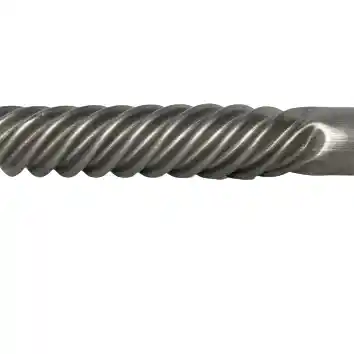
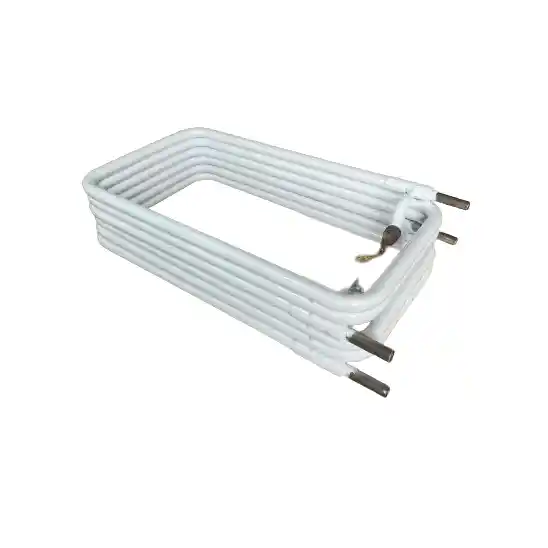
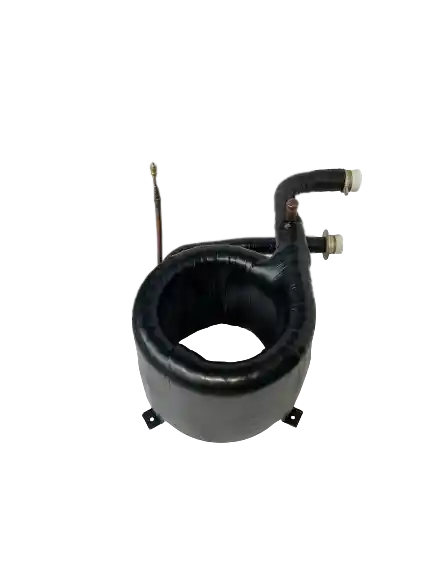
Sourcing coaxial heat exchanger?
We can meet your needs, we have ten years of professional experience and can grasp the quality of cost-effective products, welcome to consult

